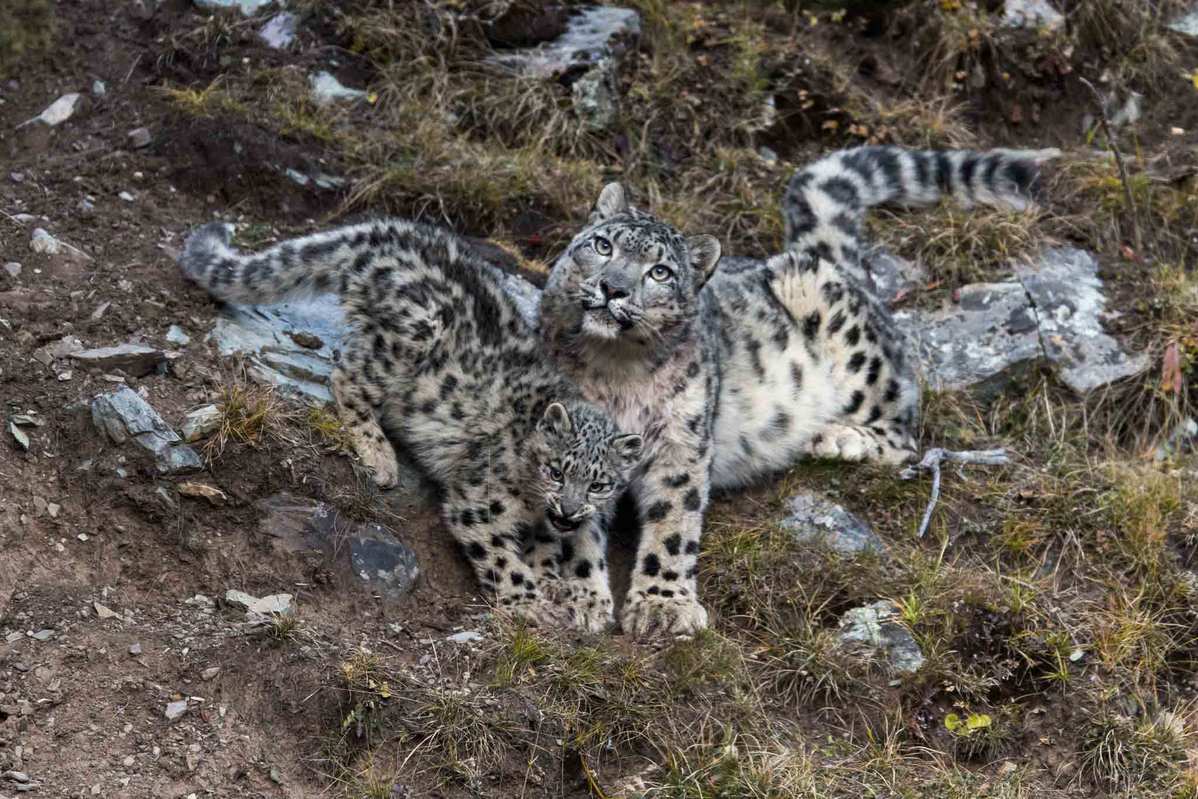Snow leopard monitoring in Qinghai mountains proves value to researchers


By analyzing six years of data provided by local herdsmen through continuous monitoring, Chinese researchers have mastered the dynamics of a fixed population of snow leopards in the headwaters of the Yangtze, China's longest river.
It is rare to continuously monitor a fixed population of snow leopards for more than three years.
The snow leopard is a Class I protected species in China, and the International Union for Conservation of Nature classifies it as "vulnerable" in its red list of threatened species.
In October 2013, Peking University partnered with the Shan Shui Conservation Center in Beijing to carry out ecological monitoring training for herdsmen in Yunta village, Yushu Tibetan autonomous prefecture, in Northwest China's Qinghai province.
Over the past six years, 14 trained herdsmen took turns to maintain the infrared cameras set up on the mountains every three months and submit the data to Peking University.
They monitored 23 adult snow leopards, helping researchers to find dynamic changes of the population caused by behaviors such as fighting for territory and migrating through corridors.
According to the findings, the number of snow leopards in the region increased steadily year after year, and nine healthy snow leopard cubs have since been born, said Chu Moyan, a researcher with the university.
Located at the headwaters of the Yangtze, Yunta village boasts a rich biodiversity.
Xiao Lingyun, a postdoctoral researcher at the Center for Nature and Society affiliated to Peking University, said wild animals can migrate quickly along rivers or across frozen rivers without being hindered during winter. There are signs that the region could be an important passage linking nearby snow leopard populations.
"The findings based on the herdsmen's monitoring are both valuable and effective," Xiao said. The researchers will continue to carry out in-depth research in the region, and push forward ecological monitoring training for herdsmen in the Sanjiangyuan, or Three-River Source, area.
Jagong Zala, an employee with the Shan Shui Conservation Center, said many local herdsmen became familiar with the wild animals living in the same area and had plenty of time for in-depth observations. Their analysis and discoveries based on scientific training and traditional experience can inspire researchers.
During the monitoring process, the herdsmen developed deep affection for the animals and gave every snow leopard a Tibetan name, such as Kurlha and Tsering Tsomo, meaning "Snow Lotus" and "Longevity" respectively.
"The monitoring work made me realize that we and the wildlife are all children of nature," said Tamdrin Pande, a Yunta herdsman. "We are sharing the same sky and earth. Only when the animals live well can we lead a good life."
Xinhua
- Norway's seafood exports hit record in 2025, China emerges as top three market
- Crucial tower of Shenzhen-Jiangmen Railway completed, marking significant milestone
- Hangzhou selected as a 'Zero-Waste Cities' by the UN
- China backs Tanzania's plan to double exports by 2030
- China leads renewable energy jobs growth as Africa seeks green partners
- Jilin—1 GF07 satellite transmits high-resolution photo of Harbin's winter wonderland




































